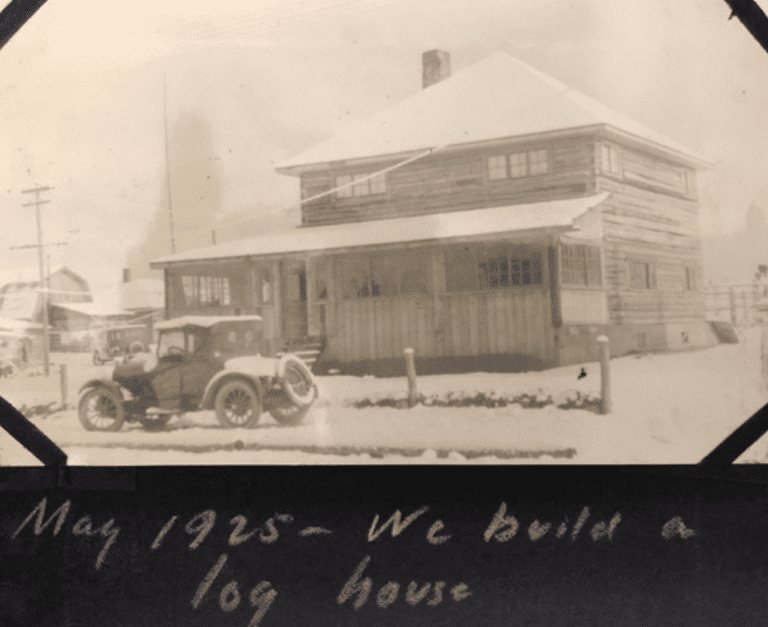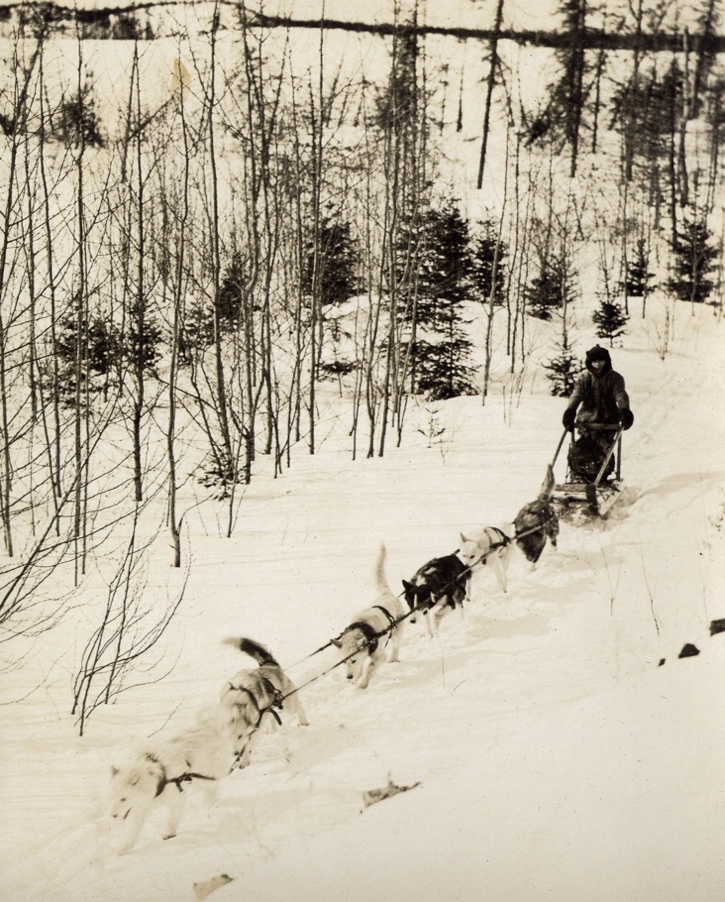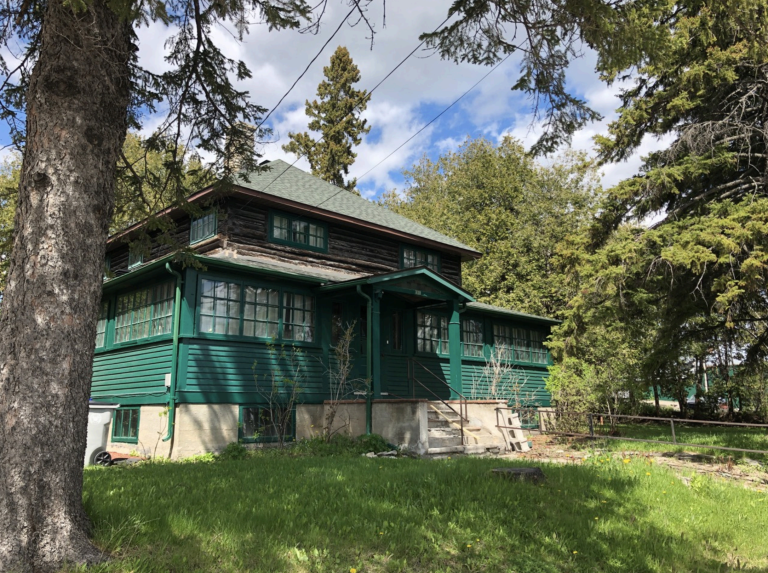
Photograph from the Darling family photo album (from the Collection of the Timmins Museum: NEC)
Prior to the discovery that led to the Porcupine Gold Rush, the Timmins-Porcupine region was already well-known to early Ojibway and Cree communities due to its natural resources. The Mattagami River, which flows through Timmins, is a tributary of the Moose River running north into James Bay.The region was particularly known for an abundance of beaver, and so the rivers and lakes around which Timmins was built were once an integral part of the established fur trade route.In 1911, a fire destroyed the original Porcupine Camp, which was located on the shore of Porcupine Lake. In response, the community organized themselves and rebuilt. The Porcupine Goldfields continued to develop as individual and distinct townsites around the respective mines. The Timmins Townsite Company was incorporated in 1912 with the purpose of providing housing and amenities to employees of the Hollinger Mine. In addition to Porcupine, Schumacher and Timmins (which are associated with the Dome, McIntyre and Hollinger mines, respectively) several other smaller settlements sprang up. The old Mattagami Townsite, in which 438 WIlson is located, is identified as the area west of Timmins, between Mountjoy and the Mattagami River. The townsite was annexed to Timmins in 1922.
The 2-storey log-home at 438 Wilson in the old Mattagami Townsite was built in 1925 by Harry W. Darling, grandfather of CIM Member George Darling. The home-site was purchased from prospector and property developer Charles Auer. According to Harry’s wife Helen Darling, the logs used to construct the house had to be cut and floated down the Mattagami River.
The Darlings first arrived in Timmins in 1911 on a handcar via the old Temiskaming & Northern Ontario Railway. Harry Darling was a mining engineer, initially employed at the Dome Lake Mine and later the Porcupine Crown Mine. After a brief appointment as manager of Dome Lake in 1917, he left Timmins briefly for Nevada but returned in 1919 to take up a position as manager of the Porcupine Crown Mine. An announcement in the Porcupine Advance, dated January 29th, 1919 states as follows: “Harry Darling is well known to the Porcupine, needs no introduction and has many friends who will welcome this mining man back to the gold camp.”

Photograph from the Darling family photo album (from the Collection of the Timmins Museum: NEC)
“My grandfather Harry W. Darling going to work at the Hollinger in Timmins Circa 1935. Notice slack traces on lead dog. He knew where to go and the others pulled!”~ George Darling, LinkedIn post
The Darlings were active members of early Timmins society through involvement on several committees, including that of St. Matthews’ Anglican Church, the Red Cross and later helping to institute the first Porcupine Dog Race. According to a 1947 article in the Daily Press, Mrs. Darling is quoted as saying that at one time, the kennels in the garden housed more than 22 huskies that were used for “toting equipment and supplies in the days when there were very few roads in this part of the country.”

438 Wilson Avenue, present day (Courtesy of Nicola Alexander)
The house built by Harry Darling at 438 Wilson still stands and was declared a heritage site in 2021 by the city of Timmins. Although the Darlings’ descendants do not own the home, Harry’s grandson George Darling continues his family’s mining legacy, working over the past 30 years in both operations and engineering.Historical excerpts from a report by Nicola Alexander, heritage professional
